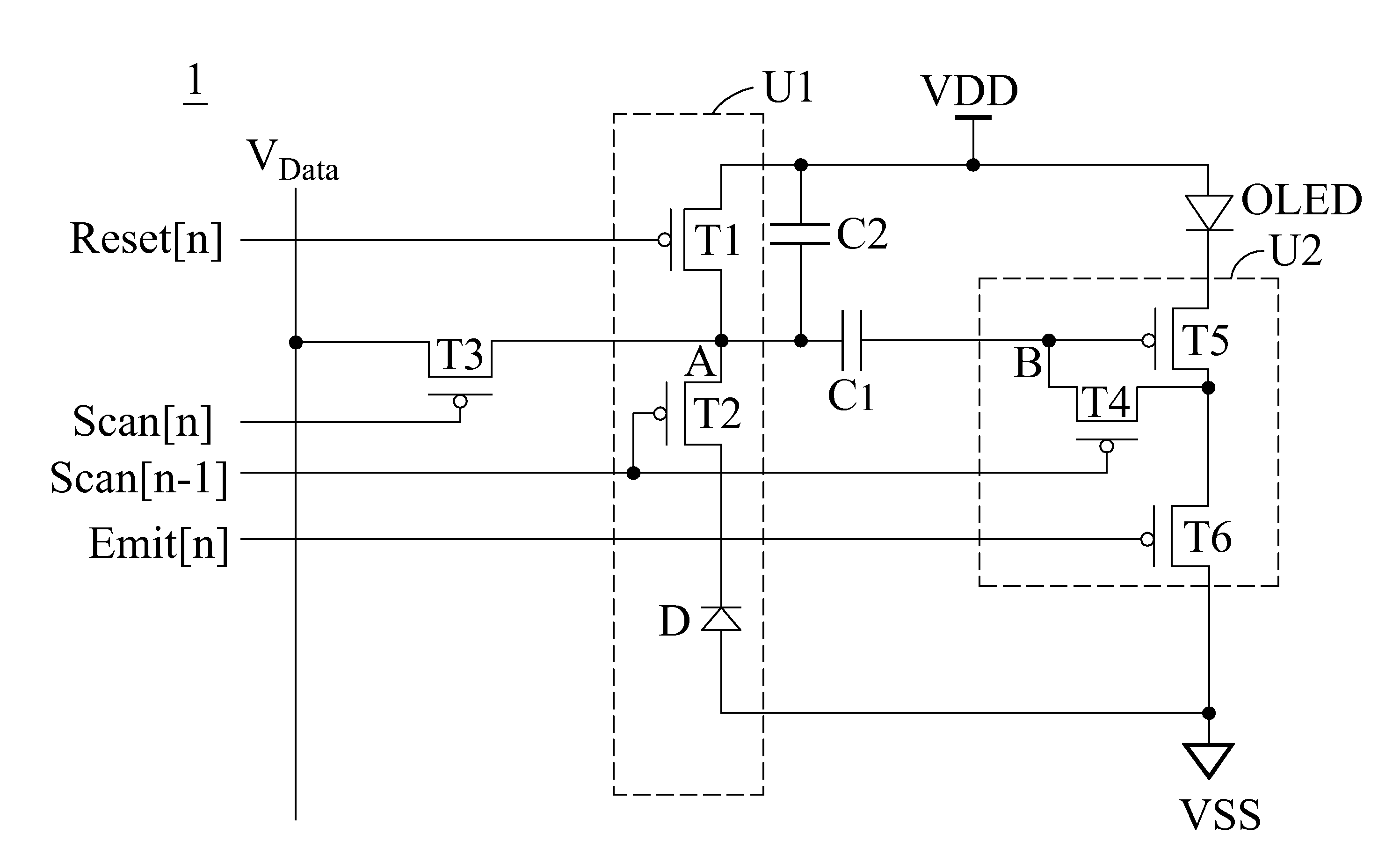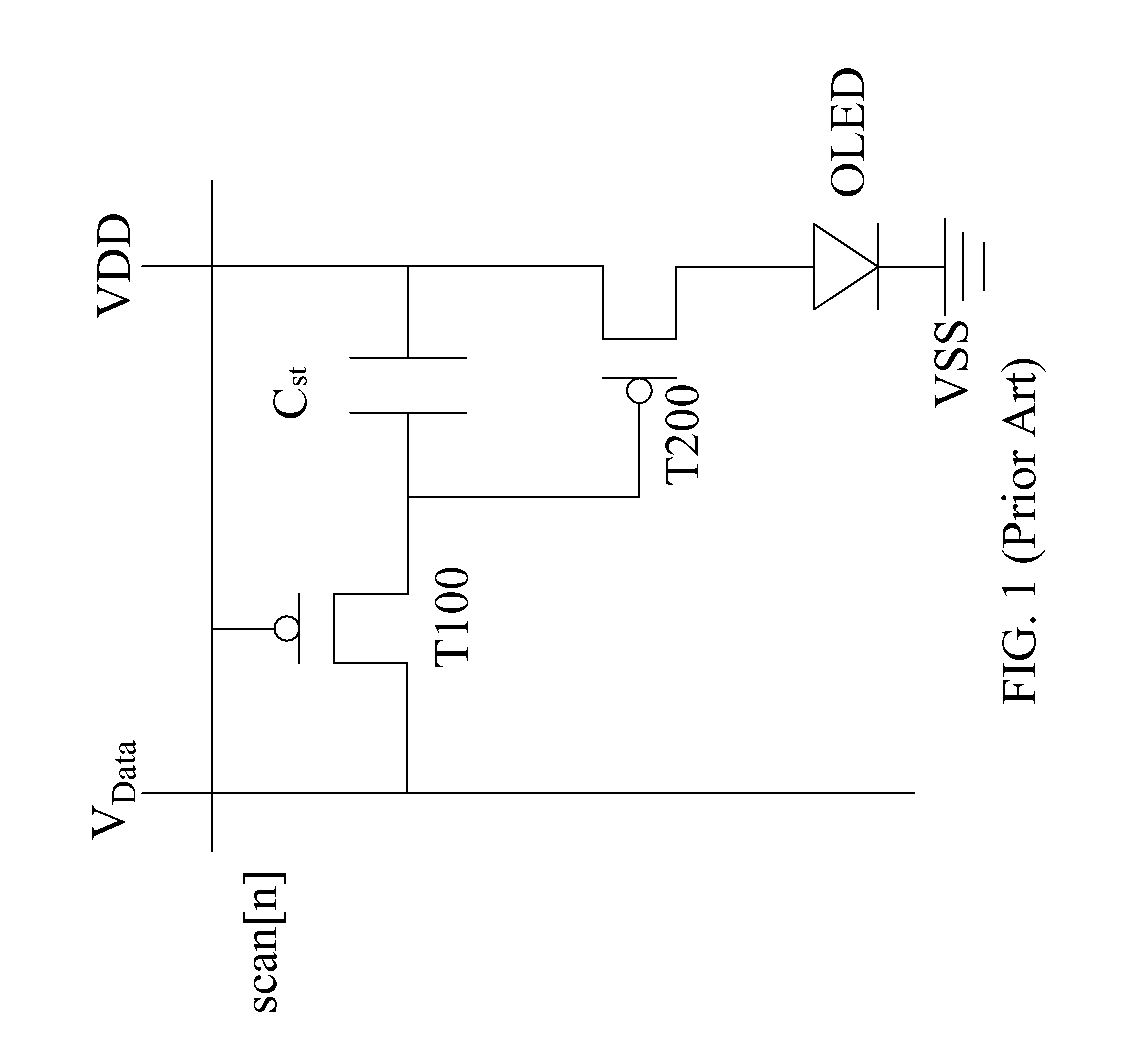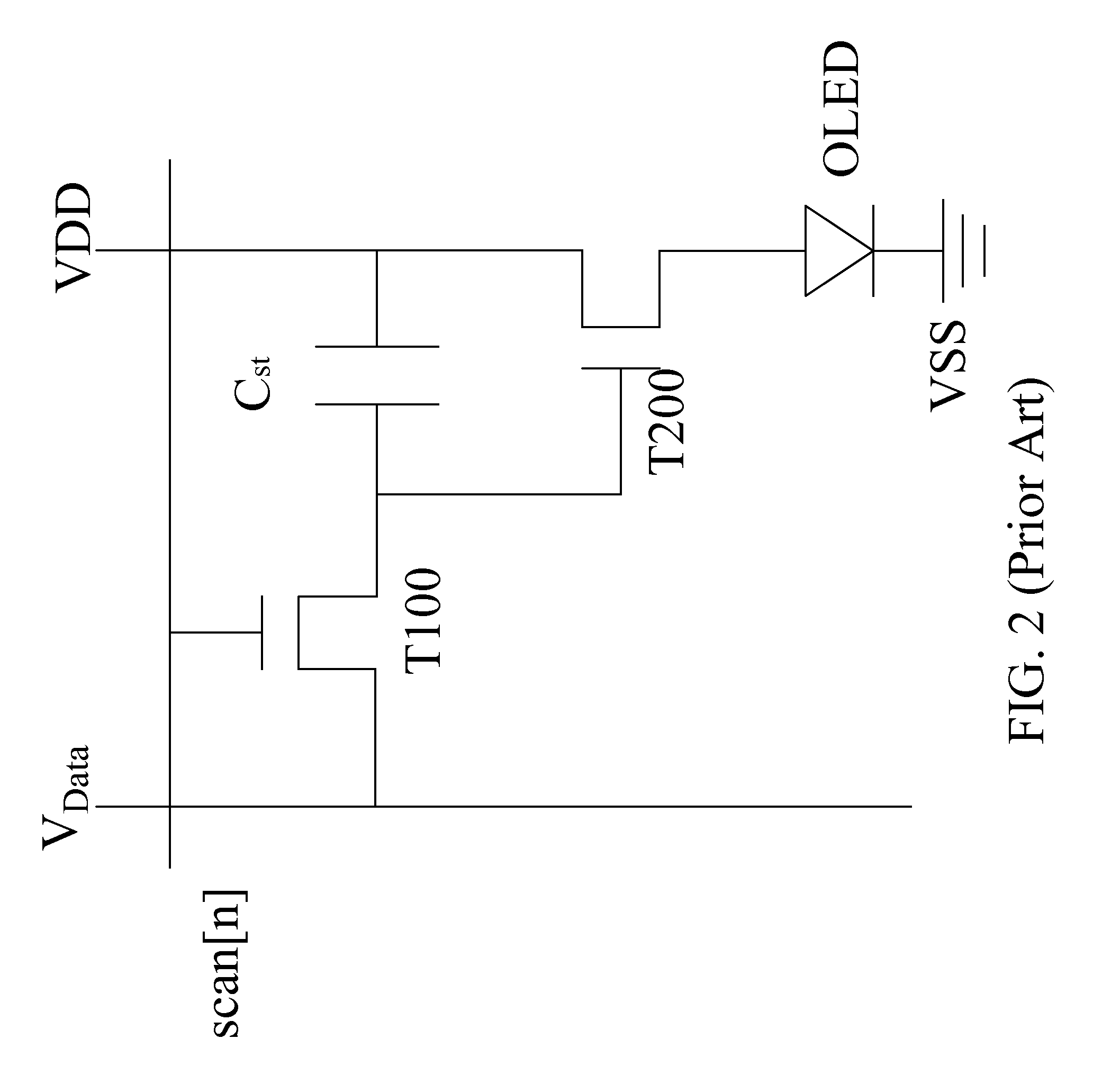Compensation Circuit of Organic Light Emitting Diode
a light-emitting diode and compensation circuit technology, applied in the direction of lighting devices, instruments, light sources, etc., can solve the problems of increasing the cross voltage of the oled, and affecting the brightness stability of the oled
- Summary
- Abstract
- Description
- Claims
- Application Information
AI Technical Summary
Benefits of technology
Problems solved by technology
Method used
Image
Examples
Embodiment Construction
[0028]With reference to FIG. 4 for a schematic circuit diagram of a compensation circuit of an organic light emitting diode in accordance with the first preferred embodiment of the present invention, the compensation circuit of an organic light emitting diode 1 comprises seven P-type thin film transistors, a first capacitor C1, a second capacitor C2, a first control signal Reset[n], a second control signal Scan[n-1], a third control signal Scan[n], a fourth control signal Emit[n], a data voltage VData, a first power signal VDD, a second power signal VSS and an OLED. In the seven P-type thin film transistors, one serves as a photodiode, and the rest serve as a first P-type thin film transistor T1, a second P-type thin film transistor T2, a third P-type thin film transistor T3, a fourth P-type thin film transistor T4, a fifth P-type thin film transistor T5 and a sixth P-type thin film transistor T6 respectively. The first P-type thin film transistor T1, second P-type thin film transis...
PUM
 Login to View More
Login to View More Abstract
Description
Claims
Application Information
 Login to View More
Login to View More - R&D
- Intellectual Property
- Life Sciences
- Materials
- Tech Scout
- Unparalleled Data Quality
- Higher Quality Content
- 60% Fewer Hallucinations
Browse by: Latest US Patents, China's latest patents, Technical Efficacy Thesaurus, Application Domain, Technology Topic, Popular Technical Reports.
© 2025 PatSnap. All rights reserved.Legal|Privacy policy|Modern Slavery Act Transparency Statement|Sitemap|About US| Contact US: help@patsnap.com



